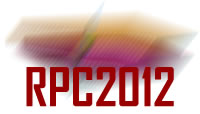Speaker
Dr
Kyong Sei Lee
(Korea University)
Description
We report a systematic study of oiled phenolic multigap RPCs for high-rate particle triggers in high-energy physics experiments. In the current R&D, four- and six-gap detector structures were applied to the typical panel-type RPCs. Reduction of avalanche charges drawn in the trigger RPCs will be fairly conductive to lessen the possibility of radiation damage as well as to enhance the detector rate capability when they operate in the experimental condition with high-rate beam background. For the systematic study, prototype detectors built in four- and six-gap types were constructed and tested for cosmic muons and 0.662-MeV gamma rays irradiated by a 200 mCi 137Cs source with a maximum signal rate of 1.6 kHz cm-2. The mean fast charges of the cosmic muons at the mid of the operational plateau, measured by four- and six gap RPCs with proper threshold setups, were 1.3 and 0.8 pC, respectively, which were at least factor 2 smaller than the value drawn in the typical 2-mm-thick double gap RPCs. In addition, the gamma-ray induced currents drawn in unit area of the RPCs were measured to confirm the reduction of the mean avalanche charges. Finally, the rate capabilities of the prototype detectors were confirmed with the maximum rate. We conclude from the current study that the multigap detector structures are characteristically and practically feasible to construct large-size panel-type trigger RPCs for high-rate triggers in high-η region of the CMS experiment.
Author
RPC CMS
(CMS)

